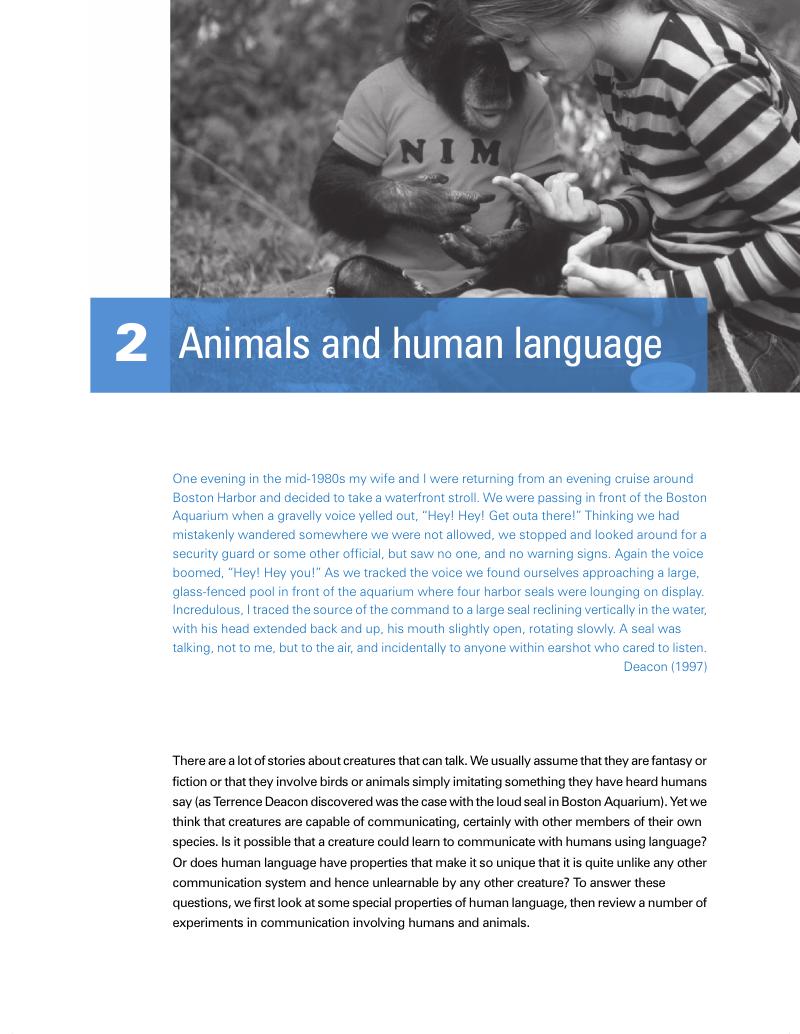Book contents
- Frontmatter
- Contents
- Preface
- 1 The origins of language
- 2 Animals and human language
- 3 The sounds of language
- 4 The sound patterns of language
- 5 Word formation
- 6 Morphology
- 7 Grammar
- 8 Syntax
- 9 Semantics
- 10 Pragmatics
- 11 Discourse analysis
- 12 Language and the brain
- 13 First language acquisition
- 14 Second language acquisition/learning
- 15 Gestures and sign languages
- 16 Writing
- 17 Language history and change
- 18 Language and regional variation
- 19 Language and social variation
- 20 Language and culture
- Glossary
- References
- Index
- References
2 - Animals and human language
- Frontmatter
- Contents
- Preface
- 1 The origins of language
- 2 Animals and human language
- 3 The sounds of language
- 4 The sound patterns of language
- 5 Word formation
- 6 Morphology
- 7 Grammar
- 8 Syntax
- 9 Semantics
- 10 Pragmatics
- 11 Discourse analysis
- 12 Language and the brain
- 13 First language acquisition
- 14 Second language acquisition/learning
- 15 Gestures and sign languages
- 16 Writing
- 17 Language history and change
- 18 Language and regional variation
- 19 Language and social variation
- 20 Language and culture
- Glossary
- References
- Index
- References
Summary

Information
- Type
- Chapter
- Information
- The Study of Language , pp. 10 - 24Publisher: Cambridge University PressPrint publication year: 2010
